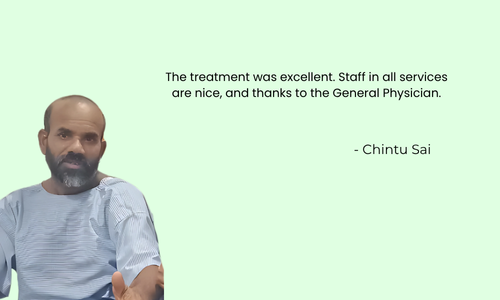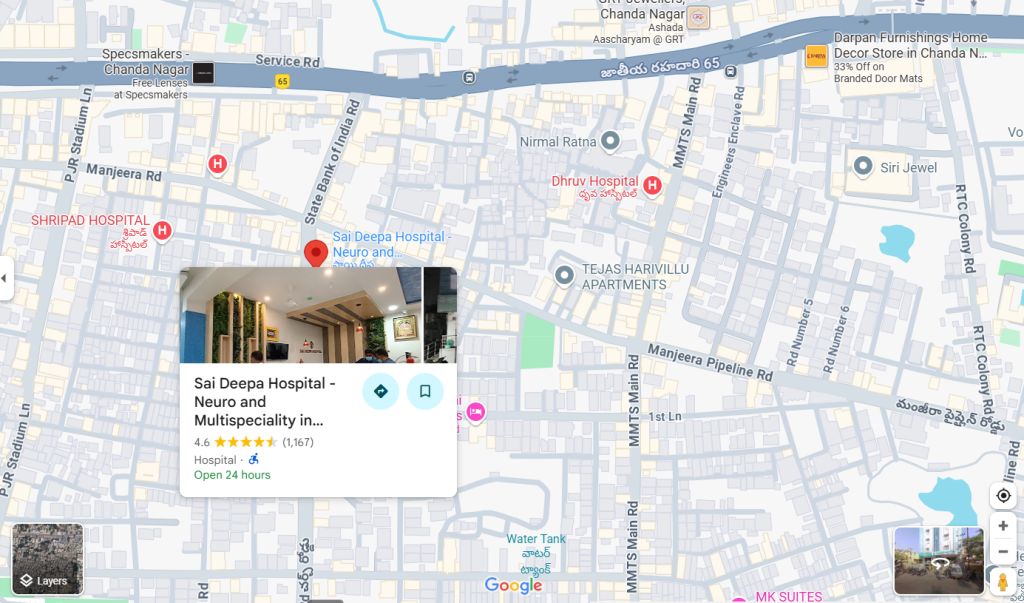Best Anal Fistulas Treatment in Hyderabad
- Home
- Best Anal Fistulas Treatment in Hyderabad
Best Anal Fistulas Treatment in Hyderabad
Anal fistulas are an uncomfortable and sometimes painful condition that can significantly affect a person’s daily life. These abnormal connections or tunnels between the anal canal and the skin around the anus are often the result of an infection that hasn’t healed properly. Without timely treatment, they can lead to recurring discomfort, drainage, and even serious complications.
Book Free Appointment
1L+
Happy Customers
25+
Qualified Doctors
50
Rooms
5000+
Successful Surgeries
Free
Consultation
24/7 Ambulance
Facility
Insurance
Claim Support
What Is an Anal Fissure?
An anal fistula is a small tunnel that develops between the end of the bowel (anal canal) and the skin near the anus. This condition typically begins with an anal abscess, which is a collection of pus caused by an infection of small glands located inside the anus. If the abscess doesn’t heal completely, it can leave behind a tunnel, forming a fistula.
These fistulas can vary in length, depth, and complexity. Some are simple and shallow, while others are deep, with multiple branches. In all cases, they require medical attention to prevent recurrent infections and further complications.

Dr. Sasidhara Roa A
MBBS, MS
5000+ Successful Surgeries
11+ Years of experience
Dr. Sasidhara Rao A. is an experienced General and Laparoscopic Surgeon at Sree Sai Deepa Hospitals, Chandanagar, with over 11 years of expertise and 5000+ successful surgeries. He specializes in laparoscopic, laser, and microscopic surgeries, treating conditions like piles, fissures, varicose veins, and gallbladder issues.
Doctor’s Fellowships:
Fellowship - International Society of Coloproctology
Fellowship in Intimate Health
Fellowship in Diagnostic Endoscopy
What’s the Difference Between an Anal Fissure and Anal Fistula?
Though anal fissures and anal fistulas both cause discomfort in the anal region, they are very different:
- An anal fissure is a small tear or crack in the lining of the anus, often caused by passing hard stools or severe constipation. It typically causes sharp pain and bright red bleeding during bowel movements.
- An anal fistula, on the other hand, is a tunnel formed by infection and leads to ongoing drainage of pus or stool through the skin. Unlike fissures, fistulas can cause chronic pain and recurrent abscesses.
Understanding the difference is key to choosing the right treatment path.
What Are Anal Fistula Symptoms?
The symptoms of an anal fistula can vary depending on its severity but commonly include:
- Persistent pain and swelling around the anus
- Discharge of pus or blood from a small hole near the anus
- Itching or irritation in the anal region
- Discomfort while sitting or during bowel movements
- Recurring abscesses or swelling that bursts and drains fluid
- Occasionally, fever or chills, especially if an infection is active
If you notice any of these symptoms, it’s essential to consult a doctor promptly to prevent complications.
What Does an Anal Fistula Look Like?
Externally, an anal fistula may appear as a small pimple-like opening near the anus that leaks pus or blood. The surrounding skin may be red, swollen, or irritated. Internally, this opening connects to the anal canal via a narrow tunnel.
In some cases, more than one external opening may be visible, especially in complex or longstanding fistulas.
Get your surgery cost
What Are the Possible Difficulties of an Anal Fistula?
Ignoring an anal fistula can lead to serious health issues, such as:
- Recurrent infections or abscesses, leading to pain and fever
- Chronic drainage, causing skin irritation and hygiene concerns
- Tissue damage, resulting in more complicated surgeries
- Fistula tracts spreading deeper, increasing treatment difficulty
In rare cases, incontinence if the sphincter muscles are affected during surgery
How is an Anal Fistula Diagnosed?
Doctors use several methods to diagnose an anal fistula accurately:
- Physical Examination: A doctor will inspect the anal region for external openings, swelling, or discharge.
- Digital Rectal Exam (DRE): The doctor gently inserts a gloved finger into the rectum to feel for any internal openings or tracks.
- Proctoscopy or Anoscopy: These tools help visualize the inside of the anal canal.
- Imaging Tests: MRI or endoanal ultrasound may be used for complex or recurrent fistulas to map the fistula’s path.
- Fistulography: An X-ray with contrast dye outlines the fistula tract, helping plan treatment.
What Are the Different Types of Anal Fistulas?
Anal fistulas are classified based on their location and path relative to the anal sphincter muscles:
- Intersphincteric Fistula: The most common type, passing between internal and external sphincters.
- Transsphincteric Fistula: Crosses through both sphincters and exits on the skin.
- Suprasphincteric Fistula: Loops above the sphincter muscles and opens externally.
- Extrasphincteric Fistula: Starts from the rectum and bypasses the sphincter, typically due to trauma or infection.
- Complex Fistulas: Involve multiple branches, often associated with Crohn’s disease or tuberculosis.
Accreditations

Saideepaneurocare Hospitals is NABH certified, a mark of excellence in patient safety and care. We follow stringent healthcare protocols and maintain world-class hygiene standards.

We are ISO 9001 certified, ensuring the highest standards in quality management and patient care. This certification reflects our commitment to efficient processes and continuous improvement in healthcare services.
What Are the Treatments for Anal Fistula?
Treating anal fistulas typically requires a surgical approach, as they rarely heal on their own. The primary goal of treatment is to remove the fistula tract, prevent recurrence, and preserve anal sphincter function to avoid complications like incontinence. The choice of surgery depends on the fistula’s complexity, depth, location, and the patient’s overall health. Below are the most commonly used surgical procedures for treating anal fistulas:
1. Fistulotomy
A fistulotomy is the most common and straightforward procedure for treating simple, low-lying fistulas. In this procedure:
The surgeon opens the entire length of the fistula tract by cutting along it.
The tract is then flattened and left open to heal naturally from the inside out.
Healing typically takes a few weeks, with regular dressing changes.
Advantages: High success rate, minimal recurrence, suitable for simple fistulas.
Risks: Minor risk of incontinence if the sphincter muscle is involved.
2. Seton Placement
A seton is a surgical thread or rubber band placed through the fistula tract, often used when:
The fistula passes through a significant portion of the sphincter muscle, making direct cutting risky.
The seton helps keep the fistula open for drainage, preventing abscesses and reducing infection.
It may be left in place for several weeks or months to promote healing and may be followed by definitive surgery.
There are two types: loose setons (for drainage) and cutting setons (gradually cut through the tissue).
Advantages: Allows drainage without sphincter damage; useful for complex cases.
Risks: Discomfort, long treatment duration.
3. Advancement Flap Procedure
This procedure is ideal for complex or high fistulas, where preserving sphincter function is critical. It involves:
Closing the internal opening of the fistula with a flap of healthy tissue, usually taken from the rectum or anal canal.
The external opening is cleaned and left to drain.
The goal is to block the fistula from inside, allowing it to heal without cutting the sphincter.
Advantages: Suitable for complex fistulas, minimal risk to continence.
Risks: Slightly higher risk of recurrence compared to fistulotomy.
4. LIFT Procedure (Ligation of Intersphincteric Fistula Tract)
The LIFT procedure is a minimally invasive technique that targets fistulas without cutting the anal sphincter muscle:
The surgeon accesses the fistula between the sphincter muscles, identifies the tract, and ties it off (ligates).
The infected tissue is removed, and the internal opening is closed.
Recovery is quick with minimal discomfort and risk to sphincter function.
Advantages: High success rate, low risk of incontinence, effective for medium to complex fistulas.
Risks: Not suitable for all fistula types, mild recurrence possible.
5. Laser Surgery (FiLaC – Fistula Laser Closure)
Laser treatment is a modern, minimally invasive option that uses laser energy to seal the fistula from the inside:
A laser probe is inserted into the fistula tract.
Laser energy shrinks and seals the tract, promoting healing without cutting tissue.
It’s painless, has a short recovery period, and can often be done as a daycare procedure.
Advantages: No cuts or stitches, minimal pain, preserves sphincter function, quick return to normal activities.
Risks: Slightly higher cost; success rates can vary depending on fistula complexity.
Choosing the Right Treatment
The best treatment option is determined based on:
Type and complexity of the fistula
Involvement of sphincter muscles
Risk of recurrence or complications
Patient preference, lifestyle, and health condition
Consulting a specialized proctologist or colorectal surgeon ensures the most effective and safest treatment outcome. Early intervention typically leads to better recovery and fewer complications.
Sai Deepa Hospital - Neuro and Multispeciality
Plot no 387, Church road, Huda colony, Chanda Nagar, Hyderabad – 500050
Which is the Best Hospital for Anal Fistulas in Hyderabad
When it comes to expert care and advanced treatments for anal fistulas, Sree Sai Deepa Hospitals in Chandanagar, Hyderabad, is a trusted name. The hospital offers laser treatment for fistulas, along with other modern surgical options tailored to patient needs.
With skilled surgeons, compassionate staff, and state-of-the-art facilities, Sree Sai Deepa ensures effective and safe outcomes for fistula patients.
Where to get the best Anal fistula treatment in Chandanagar, Hyderabad?
📍 Sai Deepa Hospitals, Chanda Nagar, Hyderabad
📞 Call or WhatsApp: +91-7093762716
🌐 www.saideepaneurocare.com
Best Anal Fistulas surgeon in Chandanagar | Best Anal Fistulas surgeon in Miyapur | Best Anal Fistulas surgeon in Kukatpally | Best Anal Fistulas surgeon in Hyderabad
Patient Reviews



FAQ's on Anal Fistual
1. What is a Perianal Vaginal Fistula?
This is an abnormal connection between the anus/rectum and the vagina. It can cause leakage of stool or gas from the vagina and typically requires surgical correction.
2. What Are the Warning Signs of Fistula?
Pain, swelling, persistent drainage, fever, and recurring abscesses are key indicators. Discomfort that doesn’t resolve should prompt medical evaluation.
3. How to Confirm It’s an Anal Fistula?
A doctor can confirm it through physical exam, imaging, or probing the tract. If there’s a history of abscess, fistula is likely.
4. Are Fistula and Piles the Same?
No. Fistulas are infected tunnels caused by abscesses, while piles are swollen blood vessels in the rectum or anus.
5. What Happens if You Ignore Fistula?
The infection may worsen, causing deeper tissue damage, more pain, and complex surgical needs. Timely treatment prevents this.
6. How to Stop Fistula from Spreading?
Early diagnosis, proper hygiene, and following medical advice are key. Seton placement or surgery can stop its spread.


